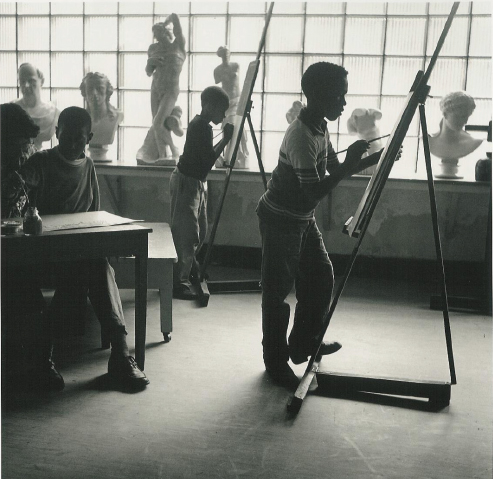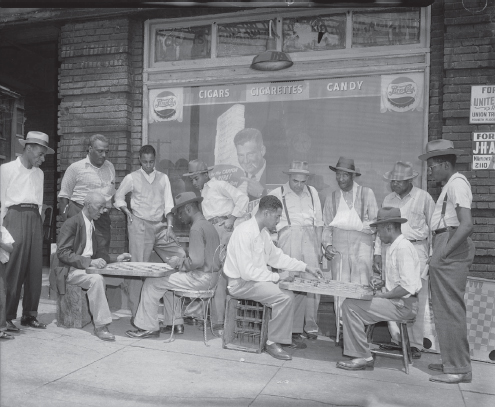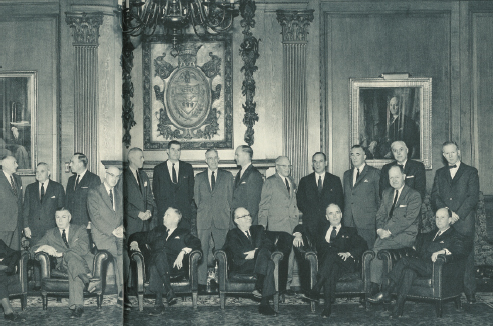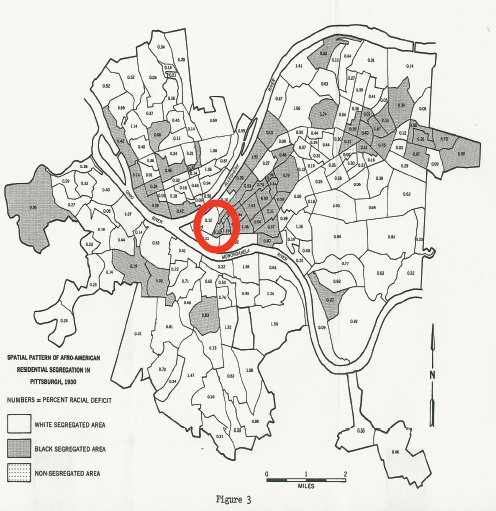3
Urban Renewal and the Production of Inequalities1
Mindy Fullilove, a professor at the Columbia University Mailman School of Public Health, discussed the concepts, practices, policies, and power relationships that contributed to the historical production of community disintegration.
BEFORE DISINTEGRATION
Fullilove focused on one community, the Hill District of Pittsburgh, Pennsylvania, as a way to examine the impact of policies that promoted social disintegration and health inequities in the United States (Hughes, 1960). To put this process in context, Fullilove explained that as a result of African American struggles during the long civil rights era between the 1940s and the 1960s, a body of law emerged to protect voting rights.2 However, at the same time there were also policies that led to devastated communities. The net result, Fullilove said, is that more people could vote in the United States, but their communities were destroyed.
_______________
1 This chapter is the rapporteur’s synopsis of the presentation by Mindy Fullilove, a professor at the Columbia University Mailman School of Public Health, and the statements therein have not been endorsed or verified by the National Academies of Sciences, Engineering, and Medicine.
2 For more information, go to https://www.justice.gov/crt/introduction-federal-votingrights-laws-1 (accessed June 21, 2016).
Dense Social Worlds
In Eva-Maria Simms’s paper about childhood in Pittsburgh’s Hill District, she described the experience of childhood in the 1930s to 1960 as a dense social world in which all adults were engaged in raising all of the children (Simms, 2008) (see Figure 3-1). This community had what Granovetter described as strong and weak ties, referring to both the strength of dyads and the weaker ties between groups that are part of the social structure of a community (Granovetter, 1973). This community is evident in the photos of the period, Fullilove said. For example, the Teenie Harris archival collection, in the words of poet, music, and cultural critic Stanley Crouch, “provides us with an epic sense of life, which is to say

FIGURE 3-1 Art class at the Irene Kaufman Settlement House in the Pittsburgh Hill District, 1950.
SOURCE: Esther Bubley, Pennsylvania Room, Carnegie Museum of Pittsburgh.

FIGURE 3-2 Checkers players in front of Babe’s Place, Logan and Epiphany Streets, Hill District, June 1949.
SOURCE: Charles “Teenie” Harris, Carnegie Museum of Art, Pittsburgh, Heinz Family Fund.
that a civilization and how it worked is laid out before us” (see Figures 3-2 and 3-3).3
The Hill District was a dense, lively place, Fullilove said. This is important, “because in the rhetoric of urban renewal, this neighborhood was called a blighted slum that was a cancer on the city, and the only way to save the city was to destroy it, to literally wipe it off the face of the earth.” To have this photographic evidence of this epic sense of life, of a sort of reciprocity, mutuality, people engaged with each other, and creating community, helps to create a sense of how wrong the policy was.
_______________
3 See http://teenie.cmoa.org (accessed May 16, 2016).

FIGURE 3-3 View of Wylie Avenue with Crawford Grill No. I, Harry’s, Joe’s Money Loaned, and the Crystal Barber Shop, Hill District, 1942.
SOURCE: Charles “Teenie” Harris, Carnegie Museum of Art, Pittsburgh, Heinz Family Fund.
URBAN RENEWAL
The American Housing Act of 1949, Title V of Public Law 81-171, authorized urban renewal which was implemented over a 14-year period and carried out in 2,500 housing projects in 1,000 cities. Sixty-three percent of the people who were relocated were African American. Just by a simple ratio, that suggests that 1,600 urban renewal projects were directed at African American neighborhoods. Therefore, the black community called urban renewal “Negro removal,” Fullilove said.
Pittsburgh’s urban renewal plan was developed by white men (see Figure 3-4). Looking at the picture, one can see that there are no women and no black people, Fullilove said. These men represented the white power structure that labeled “this epic civilization that existed in the Hill District as a blighted slum that was a cancer on the city, and they wiped it out,” she said. Fullilove identified this as an example of “white privilege thinking” and shared a description by Richard Rohr:
White privilege is largely hidden from our eyes if we are white. Why? Because it is structural instead of psychological, and we tend to inter-
pret most things in personal, individual, and psychological ways. Since we do not consciously have racist attitudes or overt racist behavior, we kindly judge ourselves to be open minded, egalitarian, “liberal,” and therefore surely not racist. Because we have never been on the other side, we largely do not recognize the structural access, the trust we think we deserve, the assumption that we always belong and do not have to earn our belonging, the “we set the tone” mood that we white folks live inside of—and take totally for granted and even naturally deserved. Only the outsider can spot all these attitudes in us. It is especially hidden in countries and all groupings where white people are the majority. (Tune, 2016)
Fullilove described how Edgar Kaufman, the head of Kaufman Department Store, loved light opera and was looking for a site that the Pittsburgh Civic Light Opera could use. The Lower Hill District was identified as the prime area in which to build (see Figures 3-5 and 3-6). It came to be called the Civic Arena, and it was finished in 1961 after the African American community was forced to move. After the arena was built (see Figure 3-7), not only was an entire section of the Hill District wiped out, but highways and parking lots were erected between the remaining African American community and downtown Pittsburgh.

FIGURE 3-4 Executive committee of the Allegheny Conference.
SOURCE: Stefan Lorant, 1964, p. 433.

FIGURE 3-5 Segregation in Pittsburgh, 1930.
NOTE: The red oval identifies the Hill District neighborhood.
SOURCE: Darden, 1973.
Root Shock
The people who were forced to move (see Figure 3-8) experienced what Fullilove called root shock, which is a traumatic stress reaction to losing all or part of one’s emotional ecosystem (Fullilove, 2009). People experience root shock when an entire neighborhood is uprooted and destroyed, similar to the root shock that plants experience when they are yanked out of the ground. These are profound experiences. People are losing their neighborhood. They are losing their neighbors. They are los-

FIGURE 3-6 Pittsburgh’s proposed plan for urban renewal. Aerial photograph of the Lower Hill District, 1956.
SOURCE: Photographer unknown. Fullilove, 2009.
ing their businesses. They are losing their churches. They are losing their schools. They are having their whole lives upended. They have to make new lives and manage huge emotional costs, economic costs, social costs, and political costs.
SOCIAL DISINTEGRATION
Simms reported that the people she interviewed talked about their social networks losing some of their density from 1960 to 1980, the period after urban renewal (Simms, 2008). One of her respondents mentioned that one of the changes was that previously all of the adult neighbors would discipline neighborhood children, Fullilove said. With urban renewal changing the density of social relationships, however, people did not know each other as well, and the dense networks started to “break apart.” Not only were people heartsick for their lost neighborhood, Fullilove said, but without community monitoring of children, the children started to misbehave, and other things started to fall apart too.

FIGURE 3-7 The Lower Hill District after urban renewal. Aerial photograph of completed Civic Arena, 1961.
SOURCES: Photographer unknown. Courtesy of the Pennsylvania Room, Carnegie Library, Pittsburgh. Fullilove, 2009.
One of the things that happened in the aftermath of broader deindustrialization was that white workers had access to education that prepared them for work in scientific and technical fields, Fullilove said. Pittsburgh rebuilt its economy on education and medicine, but African Americans were not able to access the education necessary to get into those fields, and they have basically been left behind, not only in the economy of Pittsburgh but in economies all across the United States.

FIGURE 3-8 Moving Day, 1951.
SOURCE: Richard Saunders. Pittsburgh photographic project. Pittsburgh, Pennsylvania: Carnegie Library.
Petty-Mindedness
Petty-mindedness, a concept that the economist Paul Krugman has written about a great deal, is very useful for thinking about how Americans do not want to spend money for things that ought to be invested in, Fullilove said. An example of petty-mindedness is disinvestment in neighborhoods like Middle Hill in Pittsburgh (see Figure 3-9). Disinvestment led to the collapse and abandonment of buildings. Neighborhoods like Middle Hill illustrate the long-term ravages of bank redlining. These are neighborhoods that if not legally redlined were at least paradigmatically redlined. The narrative of disinvestment and petty-minded thinking, Fullilove suggested, is of not wanting to spend money “for those people” who were blamed for the conditions of slum neighborhoods. They were accused of not taking care of themselves, so why should the nation do it?

FIGURE 3-9 Middle Hill District, the ravages of disinvestment, 1999.
NOTE: Opposite end of Wiley Avenue, where Crawford Grill was located (see Figure 3-3).
SOURCE: Photographed by Fullilove, 2000.
Fragmentation
The result of disinvestment was the destruction of social bonds and the loosening of strong family ties, Fullilove said. Not only did families and churches fragment, but also the weak ties that carried across groups were disappearing. In the end, the social disintegration and fragmentation became universal. What is poorly understood about social disintegration is that not only were the so-called targeted neighborhoods destroyed, the functioning of the whole city was thrown into social disintegration, and
fragmented networks of connection become characteristic of the larger place.
The arc of the policies in the second half of the 20th century was the embodied habits of being in separate spaces, sorting people by race and class, Fullilove said. Individuals may work with people different from themselves, but they do not socialize outside of work. People go back to segregated neighborhoods and do not live together and do not know each other. Therefore, people do not experience someplace or something different, and this limits their capacity to think differently about the entire city.
A CITY IN MIND
One of the remedies for the ways in which division, apartness, and otherness are lodged in people’s minds is to begin to see the big picture, the whole picture. The first principle of urban restoration is that people cannot just focus on neighborhoods or populations, but they must think more holistically and must have the whole city in mind (Kunstler, 2003).4 Fullilove and her colleagues adopted a perspective of urbanism, a science of the ecology of cities. To them, urban restoration involves people finding common ground and talking to each other in new conversations. These conversations are a first step toward healing and recovery.
In order to understand the broader context of a city, Fullilove said, there is a need to learn the stories of an entire city, to learn about what architect and urban planner Michel Cantal Dupart calls the elephants, the wonderful things in unexpected places, and share them with others (Fullilove, 2013). Public housing, for example, has to be seen as a part of what is needed by a whole city. Public housing needs maintenance, and it does not get the maintenance it needs anywhere in the nation. The people that live in public housing are blamed for bad management and the conditions that lead to its disintegration into a distressed community. There is then a desire by officials to have it torn down. By adopting a broader perspective that considers the larger context, Fullilove said, it is obvious that the housing is part of a broader social disintegration where the bridges are not maintained, the electrical grid is not maintained, and the streets are not plowed when there is snow. When people get the big picture and shift their perspective to see the city in mind, they can see where the social disintegration has torn communities apart, where white privilege thinking has given people bad ideas, and where petty-mindedness is a dead end.
_______________
4 See http://www.p2wny.org/uploads/2/5/4/2/25429918/periodic_table_of_elements_of_urban_restoration.pdf (accessed July 13, 2016).
This page intentionally left blank.












